Table of content
Sponge gourd, also known as luffa or Chinese okra, is a versatile vegetable celebrated for its mild flavor and tender texture. When stir-fried, it transforms into a delightful dish that pairs well with rice, noodles, or grilled meats. This guide will walk you through selecting the finest ingredients, mastering stir-frying techniques, and customizing the recipe to suit your taste. By the end, you’ll have a deep understanding of how to elevate this humble vegetable into a restaurant-quality meal.
Introduction to Sponge Gourd
Sponge gourd (Luffa acutangula) is a member of the cucumber family, native to South Asia but widely used in Southeast Asian, Chinese, and Caribbean cuisines. Its cylindrical shape, ridged skin, and soft, spongy flesh make it ideal for quick cooking methods like stir-frying. When cooked, it retains a subtle crunch while absorbing the flavors of aromatics like garlic, ginger, and soy sauce.
Beyond its culinary appeal, sponge gourd is a nutritional powerhouse. Rich in vitamins A and C, dietary fiber, and antioxidants, it supports digestion, immune health, and skin vitality. Its low-calorie content also makes it a favorite for health-conscious cooks.
Ingredients and Their Roles
The beauty of stir-fried sponge gourd lies in its simplicity. Here’s a breakdown of the key ingredients and how they contribute to the dish:
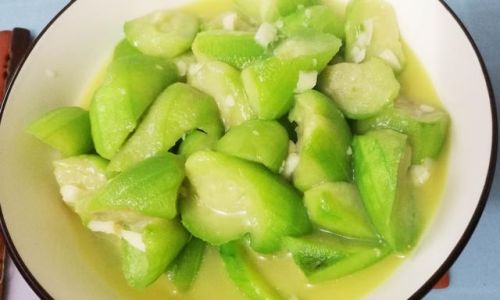
- Sponge Gourd (2 medium, about 1.5 lbs): The star ingredient. Look for firm, unblemished gourds with vibrant green skin. Avoid those with soft spots or wrinkled skin, as they may be overripe.
- Garlic (4 cloves, minced): Adds pungent aroma and depth. For a milder flavor, use sliced garlic.
- Ginger (1-inch piece, grated): Enhances the dish with a warm, citrusy note.
- Scallions (2 stalks, chopped): Separate white and green parts. The white parts are stir-fried with the gourd, while the greens garnish the finished dish.
- Cooking Oil (2 tbsp): Use neutral oils like vegetable or peanut oil for high-heat cooking.
- Soy Sauce (1 tbsp): Provides umami and saltiness. Light soy sauce is preferred for its delicate flavor.
- Oyster Sauce (1 tsp, optional): Adds richness and a hint of sweetness. Substitute with hoisin sauce or vegetarian stir-fry sauce if desired.
- Sesame Oil (½ tsp): A finishing touch that imparts nutty, toasty aroma.
- White Pepper (¼ tsp): Offers a subtle heat without overpowering the dish.
- Salt (to taste): Adjust based on the saltiness of your soy sauce.
- Cornstarch Slurry (1 tsp cornstarch + 1 tbsp water, optional): Thickens the sauce for a glossy finish.
Optional Additions:
- Dried Chilies (2-3, sliced): For a spicy kick.
- Shaoxing Wine (1 tbsp): Adds complexity; omit for alcohol-free cooking.
- Sugar (¼ tsp): Balances flavors if using a very salty soy sauce.
Step-by-Step Cooking Guide
a. Preparing the Sponge Gourd
- Wash and Trim: Rinse the gourds under cold water. Trim off both ends using a sharp knife.
- Peel (Optional): While the skin is edible, peeling it results in a smoother texture. Use a vegetable peeler or paring knife to remove the ridged outer layer.
- Cut into Strips: Halve the gourd lengthwise, then slice into ¼-inch thick half-moons. For a rustic texture, cut diagonally into bite-sized pieces.
- Salt and Drain (Key Step): Toss the sliced gourd with 1 tsp salt and let it sit for 10-15 minutes. This draws out excess moisture, preventing a soggy dish. Rinse under cold water and pat dry thoroughly.
b. Preparing Aromatics and Seasonings
- Mince Garlic and Ginger: Finely chop or use a garlic press for uniform pieces.
- Chop Scallions: Separate the white and green parts. The white parts are stir-fried early; the greens are a garnish.
- Mix Sauce: In a small bowl, combine soy sauce, oyster sauce (if using), sesame oil, white pepper, and sugar. Set aside.
c. Stir-Frying Technique
Stir-frying requires high heat and constant motion to cook ingredients quickly without steaming them. Follow these steps for perfection:
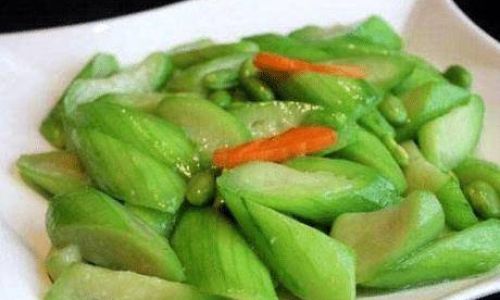
- Heat the Wok: Place a carbon-steel or stainless-steel wok over high heat. Add the oil and swirl to coat the surface.
- Sauté Aromatics: When the oil shimmers, add the garlic, ginger, and white parts of the scallions. Stir-fry for 30 seconds until fragrant but not browned.
- Add Sponge Gourd: Toss in the prepared gourd. Spread it evenly in the wok and let it sear for 1-2 minutes without stirring. This caramelizes the edges slightly.
- Stir-Fry Vigorously: Use a spatula to toss and stir the gourd continuously for 3-4 minutes. The goal is to cook it until tender-crisp (still slightly firm to the bite).
- Deglaze (Optional): If the pan gets dry, splash in a tablespoon of Shaoxing wine or water and scrape up any browned bits.
d. Seasoning and Finishing Touches
- Add Sauce: Pour the prepared sauce over the gourd. Toss to coat evenly.
- Thicken (Optional): If you prefer a thicker sauce, stir in the cornstarch slurry and cook for 1 minute until glossy.
- Adjust Seasoning: Taste and add salt or pepper if needed.
- Garnish: Sprinkle with the reserved scallion greens and a drizzle of sesame oil. Serve immediately.
Tips for Perfect Stir-Fried Sponge Gourd
- Control Moisture: Salting the gourd beforehand is crucial. Excess water turns the dish soggy.
- High Heat is Non-Negotiable: A smoking-hot wok ensures quick cooking and prevents the gourd from releasing too much liquid.
- Don’t Overcrowd the Pan: Cook in batches if necessary. Overcrowding lowers the temperature and steams the vegetables instead of stir-frying them.
- Customize the Aromatics: Experiment with shallots, lemongrass, or Thai basil for a different flavor profile.
- Texture Matters: Stop cooking when the gourd is bright green and slightly resistant to the bite. Overcooking makes it mushy.
Variations and Customizations
- Spicy Version: Add sliced dried chilies or fresh bird’s-eye chilies during the aromatics step.
- Protein Boost: Toss in shrimp, tofu, or sliced chicken breast halfway through cooking. Ensure the protein is cooked through before adding the gourd.
- Vegan Twist: Use mushroom-based oyster sauce or tamari for a gluten-free option.
- Fermented Flavors: A splash of black vinegar or a spoonful of fermented bean paste adds tanginess.
- Herb Infusion: Garnish with cilantro, mint, or Thai basil for a refreshing finish.
Serving Suggestions and Pairings
- With Rice: The mild flavors complement jasmine, basmati, or brown rice.
- Noodle Pairing: Toss with udon, soba, or lo mein noodles for a hearty meal.
- As a Side Dish: Serve alongside grilled meats, fried rice, or dumplings.
- In Bowls: Layer over quinoa or cauliflower rice for a light lunch.
Health and Nutritional Benefits
A 1-cup serving of stir-fried sponge gourd provides:
- Calories: 20-30
- Fiber: 2g (supports digestion)
- Vitamin C: 15% of the RDI (boosts immunity)
- Vitamin A: 10% of the RDI (promotes eye health)
- Potassium: 8% of the RDI (regulates blood pressure)
Its high water content (over 90%) also aids hydration, making it ideal for hot climates or detox diets.
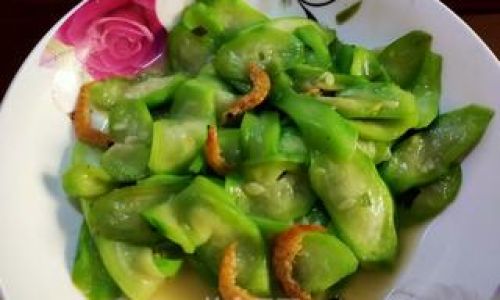
Cultural Significance in Cuisines
In Chinese cuisine, sponge gourd is a summer staple, often stir-fried with garlic or simmered in soups. In Thai cooking, it’s paired with coconut milk and curry paste, while Filipino cuisine features it in ginataang patola (gourd in coconut milk). The vegetable’s neutral taste makes it a canvas for regional spices and seasonings.
Troubleshooting Common Issues
- Soggy Texture: You skipped the salting step or overcooked the gourd. Next time, salt and drain thoroughly, and cook until just tender.
- Bland Flavor: The dish lacks seasoning. Increase soy sauce or add a pinch of salt.
- Burnt Aromatics: The heat was too high, or the garlic wasn’t stirred enough. Lower the flame slightly and keep the aromatics moving.
- Gourd Tastes Bitter: Overripe gourds can develop bitterness. Always choose young, firm specimens.
Conclusion
Stir-fried sponge gourd is a testament to the beauty of simple, fresh ingredients. By mastering the balance of heat, seasoning, and texture, you can transform this unassuming vegetable into a dish that delights the senses. Whether you’re a novice cook or a seasoned home chef, this recipe offers endless opportunities for creativity. Experiment with spices, proteins, and garnishes to make it your own. The next time you spot sponge gourd at the market, grab a few—you’re just 20 minutes away from a vibrant, healthy meal that celebrates the art of stir-frying.
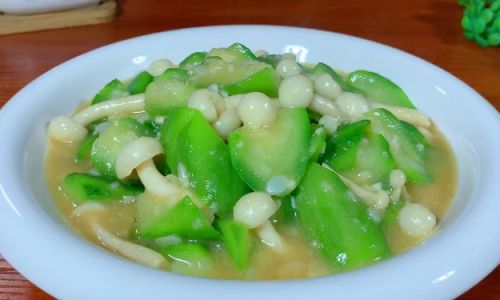
Final Tip: Pair this dish with a crisp white wine or a light lager to cleanse the palate between bites. Bon appétit!



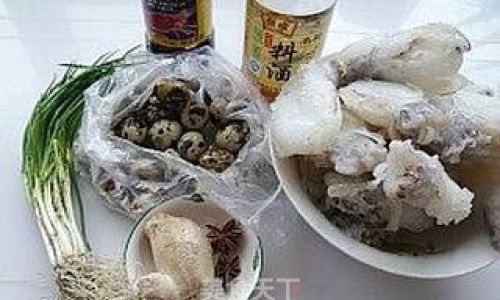


0 comments